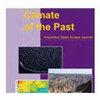青藏高原东南边缘滇苍山自 5.0-3.5 Ma 以来的快速地形增长
IF 3.2
2区 地球科学
Q1 GEOSCIENCES, MULTIDISCIPLINARY
引用次数: 0
摘要
摘要。滇仓山是青藏高原东南缘重要的地质、气候和生态边界,由于缺乏古高程的直接约束,滇仓山的地形演化至今仍不清楚。在此,我们根据位于中国云南省滇苍山东北缘大理盆地陆相大松坪剖面(约7.6-1.8 Ma)的古乐彩网学数据,定量重建了年平均温度(ANNT)的变化。综合大理盆地东缘和南缘的热年代学数据,我们明确了这一时期大理盆地的古地形演化:大理盆地的古海拔高度在〜7.6Ma时由于最初的正断层作用可能超过了2000米,可能与大理盆地周边地区目前的平均海拔(〜2200米)相当。在~5.0Ma至~3.5Ma期间,由于正断层活动的加剧,DCS北段出现了至少~1000米的隆起,南段则高达~2000米。最后,DCS 北段在 ~1.8 Ma 之后达到 ~3500 m a.s.l.的海拔高度。我们的研究结果表明,将 ANNT 定量重建与热时学和沉积学数据相结合,可以显著改善对 DCS 古地形演化的约束。本文章由计算机程序翻译,如有差异,请以英文原文为准。
Rapid topographic growth of the Diancang Shan, southeastern margin of the Tibetan Plateau since 5.0–3.5 Ma
Abstract. As a crucial geological, climatic, and ecological boundary in the southeastern margin of the Tibetan Plateau (SEMTP), the topographic evolution of the Diancang Shan (DCS) remains unclear due to the lack of direct constraints on its paleoelevation. Here, we quantitatively reconstructed changes in annual mean temperature (ANNT) based on palynological data from the terrestrial Dasongping section (~7.6–1.8 Ma) in the Dali Basin, located at the northeastern margin of the DCS in Yunnan Province, China. Integrating the thermochronological data from the eastern and southern margins of DCS, we have clarified the paleotopographic evolution of DCS during this period: the paleoelevation of DCS likely exceeded 2000 meters above sea level (m a.s.l.) due to initial normal faulting at ~7.6 Ma, possibly comparable to the current average elevation (~2200 m a.s.l.) of surrounding Dali Basin region. Significant growth occurred between ~5.0 Ma and ~3.5 Ma, with at least ~1000 meters uplift gain in the northern segment and up to ~2000 meters in the southern segment of DCS, caused by the intensification of normal faulting activities. Finally, the northern segment of DCS reached the elevation of ~3500 m a.s.l. after ~1.8 Ma. Our findings suggest that the quantitively ANNT reconstruction, combined with thermochronological and sedimentary data, can significantly improve constraint on the paleotopographic evolution of DCS.
求助全文
通过发布文献求助,成功后即可免费获取论文全文。
去求助
来源期刊

Climate of The Past
地学-气象与大气科学
CiteScore
7.40
自引率
14.00%
发文量
120
审稿时长
4-8 weeks
期刊介绍:
Climate of the Past (CP) is a not-for-profit international scientific journal dedicated to the publication and discussion of research articles, short communications, and review papers on the climate history of the Earth. CP covers all temporal scales of climate change and variability, from geological time through to multidecadal studies of the last century. Studies focusing mainly on present and future climate are not within scope.
The main subject areas are the following:
reconstructions of past climate based on instrumental and historical data as well as proxy data from marine and terrestrial (including ice) archives;
development and validation of new proxies, improvements of the precision and accuracy of proxy data;
theoretical and empirical studies of processes in and feedback mechanisms between all climate system components in relation to past climate change on all space scales and timescales;
simulation of past climate and model-based interpretation of palaeoclimate data for a better understanding of present and future climate variability and climate change.
 求助内容:
求助内容: 应助结果提醒方式:
应助结果提醒方式:


